Desirelessness is the highest bliss – Nisargadatta
Questioner: I have met many realised people, but never a liberated man. Have you come across a
liberated man, or does liberation mean, among other things, also abandoning the body?
Guidance Of Sages & Scriptures of India
GUIDANCE FOR MEDITATION AND LIFE
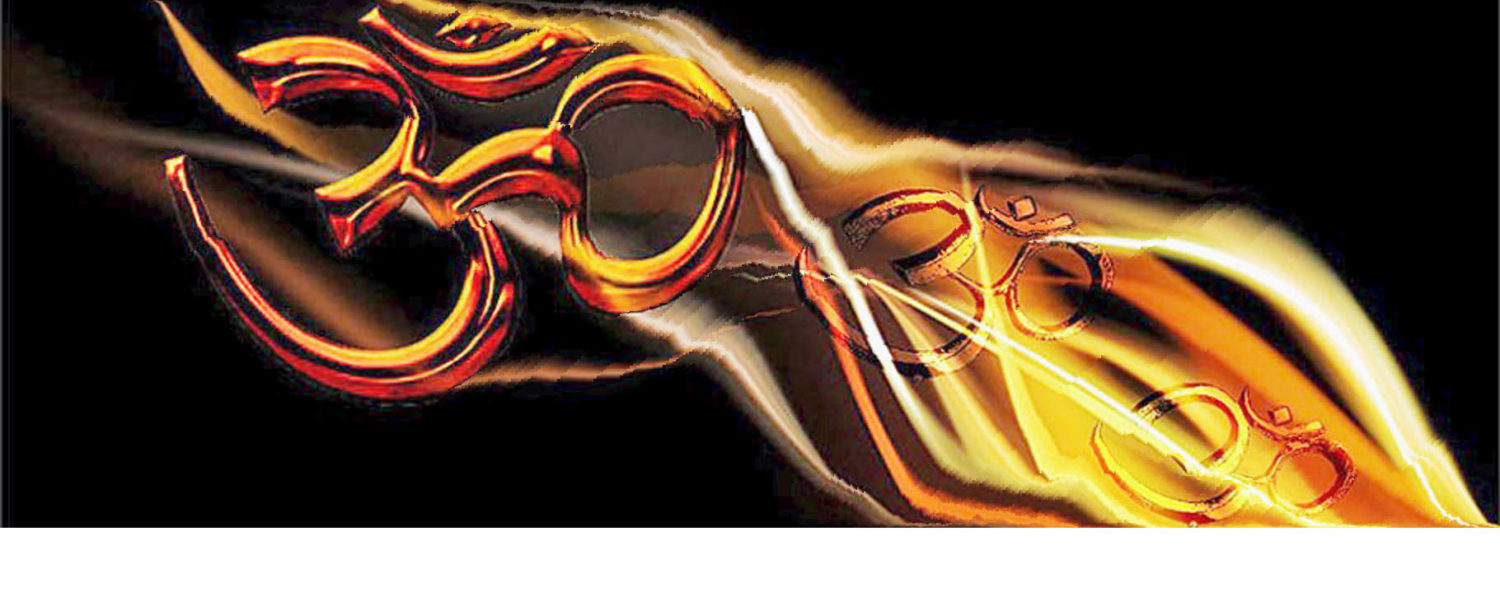
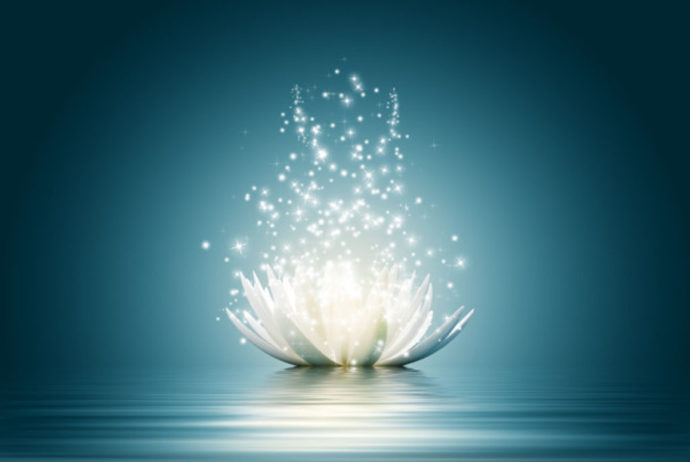
Questioner: I have met many realised people, but never a liberated man. Have you come across a
liberated man, or does liberation mean, among other things, also abandoning the body?
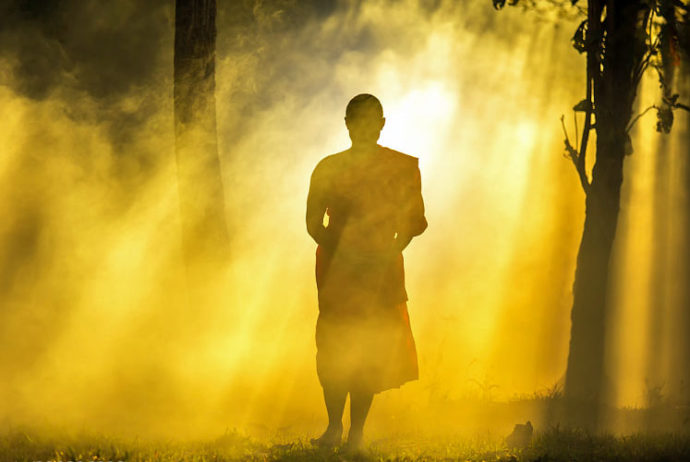
A young Sannyâsin (hermit) went to a forest; there he meditated, worshipped, and practiced Yoga for a long time.
After years of hard work and practice, he was one day sitting under a tree, when some dry leaves fell upon his head. He looked up and saw a crow and a crane fighting on the top of the tree, which made him very angry.
He said, “What! Dare you throw these dry leaves upon my head!” As with these words he angrily glanced at them, a flash of fire went out of his head — such was the Yogi’s power — and burnt the birds to ashes. He was very glad, almost overjoyed at this development of power — that he could burn the crow and the crane by a look!
After a time he had to go to the town to beg his bread. He went, stood at a door, and said, “Mother, give me food.” A voice came from inside the house, “Wait a little, my son.” The young man thought, “You wretched woman, how dare you make me wait! You do not know my power yet.” While he was thinking thus the voice came again: “Boy, don’t be thinking too much of yourself. There is neither a crow nor crane here.” He was astonished that she knew all this. He still had to wait.
At last the woman came, and he fell at her feet and said, “Mother, how did you know all that?” She said, “My boy, I do not know your Yoga or your practices. I am a common everyday woman. I made you wait because my husband is ill, and I was nursing him. All my life I have struggled to do my duty. When I was unmarried, I did my duty to my parents; now that I am married, I do my duty to my husband; that is all the Yoga I practice. But by doing my duty I have become illumined; thus I could read your thoughts and know what you had done in the forest.
Thus, in the story, the woman did her duty with cheerfulness and whole-heartedness; and the result was that she became illuminated, clearly showing that the right performance of the duties of any station in life, without attachment to results, leads us to the highest realization of the perfection of the soul.
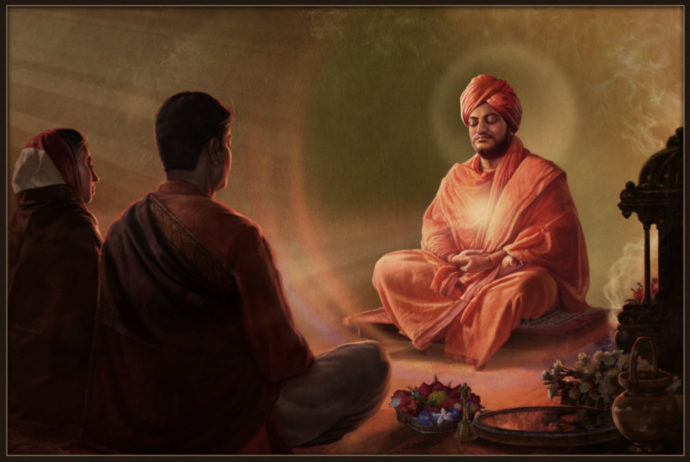
What is Duty – Vivekananda
The idea of duty is different in different nations.
The Hindu says what is in the Vedas is his duty; the Mohammedan says what is written in his book, the Koran, is his duty; and the Christian says what is in the Bible is his duty. We find that there are varied ideas of duty, differing according to different states in life, different historical periods and different nations. The term “duty”, like every other universal abstract term, is impossible clearly to define; we can only get an idea of it by knowing its practical operations and results.
When certain things occur before us, we have all a natural or trained impulse to act in a certain manner towards them; when this impulse comes, the mind begins to think about the situation. Sometimes it thinks that it is good to act in a particular manner under the given conditions; at other times it thinks that it is wrong to act in the same manner even in the very same circumstances.
The ordinary idea of duty everywhere is that every good man follows the dictates of his conscience. But what is it that makes an act a duty? If a Christian finds a piece of beef before him and does not eat it to save his own life, or will not give it to save the life of another man, he is sure to feel that he has not done his duty. But if a Hindu dares to eat that piece of beef or to give it to another Hindu, he is equally sure to feel that he too has not done his duty; the Hindu’s training and education make him feel that way.
In the last century there were notorious bands of robbers in India called thugs; they thought it their duty to kill any man they could and take away his money; the larger the number of men they killed, the better they thought they were.
Ordinarily, if a man goes out into the street and shoots down another man, he is apt to feel sorry for it, thinking that he has done wrong. But if the very same man, as a soldier in his regiment, kills not one but twenty, he is certain to feel glad and think that he has done his duty remarkably well. Therefore we see that it is not the thing done that defines a duty. To give an objective definition of duty is thus entirely impossible.
Yet there is duty from the subjective side. Any action that makes us go Godward is a good action, and is our duty; any action that makes us go downward is evil, and is not our duty. From the subjective standpoint we may see that certain acts have a tendency to exalt and ennoble us, while certain other acts have a tendency to degrade and to brutalise us. But it is not possible to make out with certainty which acts have which kind of tendency in relation to all persons, of all sorts and conditions.
There is, however, only one idea of duty which has been universally accepted by all mankind, of all ages and sects and countries, and that has been summed up in a Sanskrit aphorism thus: “Do not injure any being; not injuring any being is virtue, injuring any being is sin.”
Swami Vivekananda
Complete Works – Volume 1
What is Duty? (1)
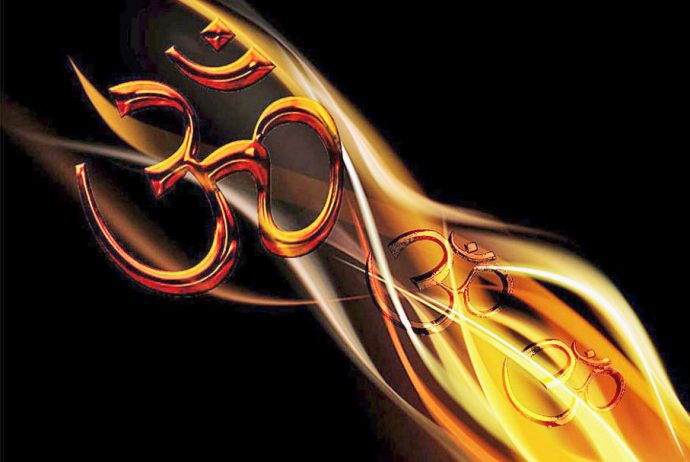
OM or AUM signifies the One Eternal Being which is The Beginning, Middle and End of All Beings.
On such a profound and important subject of Om, it is only right that I start with the authority of a Sage. In the words of Sri Ramana Maharshi : “In the sphere of speech, Pranava (the mystic sound AUM) represents the transcendental (nirguna). Om is the eternal truth. That which remains over after the disappearance of objects is Om. It does not merge in anything. It is the State of which it is said: “Where one sees none other, hears none other, knows none other, that is Perfection.” (Yatra nanyat pasyati, nanyat srunoti, nanyat vijanati sa bhuma.) All the upasanas are ways to winning it. One must not get stuck in the upasanas, but must query “Who am I?” and find the Self.”
Om represents the Eternal, Absolute, Unlimited, All-pervading, All-powerful, Blissful Reality, the One Self.
Om or Aum, is constructed with three sounds. A (pronounced as Ah), U (pronounced as Ooh), M (pronounced as Im as in him). Ah is the Beginning sound, Ooh is the Middle and Im is the End. A (Ah) emanates from deep in the body indicating the beginning, U (Ooh) emanates from the throat indicating the middle, M (Im) is said with closed lips, indicating the end. Together they indicate the Being-Consciousness-Bliss Self, as the One that is the Beginning, Middle and End of all Beings.
Again, A (Ah) refers to the Waking State, U (Ooh) refers to the Dream State and M (Im) refers to the Deep Sleep State. When Om or Aum is chanted, there is a brief silence afterwards. This Silence indicates the Absolute Blissful Being Reality.
Om, (Auṃ or Oṃ, Devanagari: ॐ) is a sacred sound and a spiritual icon in Hindu religion. It is also a mantra in Hinduism, Buddhism, Jainism, and Sikhism.
Om is part of the iconography found in ancient and medieval era manuscripts, temples, monasteries and spiritual retreats in Hinduism, Buddhism, and Jainism.
In Hinduism, Om is one of the most important spiritual symbols (pratima). It refers to Atman (soul, self within) and Brahman (ultimate reality, entirety of the universe, truth, divine, supreme spirit, cosmic principles, knowledge). The syllable is often found at the beginning and the end of chapters in the Vedas, the Upanishads, and other Hindu texts by great Sages of India. It is a sacred spiritual incantation made before and during the recitation of spiritual texts, during puja and private prayers, in ceremonies of rites of passages (sanskara) such as weddings, and sometimes during meditative and spiritual activities such as Yoga.
The syllable is also referred to as omkara (ओंकार, oṃkāra), aumkara (औंकार, auṃkāra), and pranava (प्रणव, praṇava).
The syllable Om is referred to as praṇava. Other used terms are akṣara (literally, letter of the alphabet, imperishable, immutable) or ekākṣara (one letter of the alphabet), and omkāra (literally, beginning, female divine energy).
The Om symbol ॐ is a ligature in Devanagari, combining ओ (au) and chandrabindu (ँ, ṃ).
Om came to be used as a standard utterance at the beginning of mantras, chants or citations taken from the Vedas. For example, the Gayatri mantra, which consists of a verse from the Rigveda Samhita (RV 3.62.10), is prefixed not just by Om but by Om followed by the formula bhūr bhuvaḥ svaḥ, waking, dream and deep sleep. Such recitations continue to be in use in Hinduism, with many major incantations and ceremonial functions beginning and ending with Om.
The syllable Om is first mentioned in the Upanishads, the mystical texts associated with the Vedanta philosophy. It has variously been associated with concepts of “cosmic sound” or “mystical syllable” or “affirmation to something divine”, or as symbolism for abstract spiritual concepts in the Upanishads. In the Aranyaka and the Brahmana layers of Vedic texts, the syllable is so widespread and linked to knowledge, that it stands for the “whole of Veda”.
The origin and historic foundations of Om are repeatedly discussed in the oldest layers of the Vedantic texts (the early Upanishads). The Aitareya Brahmana of Rig Veda, in section 5.32, for example suggests that the three phonetic components of Om (pronounced AUM) correspond to the three stages of cosmic creation, and when it is read or said, it celebrates the creative powers of the universe.
The Brahmana layer of Vedic texts equate Om with Bhur-bhuvah-Svah (waking, dream, deep sleep), the latter symbolizing “the whole Veda”. They offer various shades of meaning to Om, such as it being “the universe beyond the sun”, or that which is “mysterious and inexhaustible”, or “the infinite language, the infinite knowledge”, or “essence of breath, life, everything that exists”, or that “with which one is liberated”.
The Sama Veda, the poetical Veda, orthographically maps Om to the audible, the musical truths in its numerous variations (Oum, Aum, Ovā Ovā Ovā Um, etc.) and then attempts to extract musical meters from it.
Om is a common symbol found in the ancient texts of Hinduism, such as in the first line of Rig veda, as well as an icon in temples and spiritual retreats.
The syllable “Om” is described with various meanings in the Upanishads. Descriptions include “the sacred sound, the Yes!, the Vedas, the Udgitha (song of the universe), the infinite, the all encompassing, the whole world, the truth, the ultimate reality, the finest essence, the cause of the Universe, the essence of life, the Brahman, the Atman, the vehicle of deepest knowledge, and Self-knowledge”.
The Chandogya Upanishad is one of the oldest Upanishads of Hinduism. It opens with the recommendation that “let a man meditate on Om”. It calls the syllable Om as udgitha (उद्गीथ, song, chant), and asserts that the significance of the syllable is thus: the essence of all beings is earth, the essence of earth is water, the essence of water are the plants, the essence of plants is man, the essence of man is speech, the essence of speech is the Rig Veda, the essence of the Rig Veda is the Sama Veda, and the essence of Sama Veda is the udgitha (song, Om).
Chandogya Upanishad states that Rik (ऋच्, Ṛc) is speech, and Sāman (सामन्) is breath; they together produce song. The highest song is Om, asserts section 1.1.1. It says: “Let a man meditate on the syllable Om, called the udgitha; for the udgitha (a portion of the Sama-veda) is sung, beginning with Om.” It is the symbol of awe, of reverence, of threefold knowledge.
The second volume of the first chapter continues its discussion of syllable Om, explaining its use as a struggle between Devas (gods) and Asuras (demons). Ancient Indian scholars have considered this struggle between gods and demons as representing the good and evil inclinations within man, respectively. The legend in section 1.2 of Chandogya Upanishad states that gods took the Udgitha (song of Om) unto themselves, thinking, “with this song we shall overcome the demons”. The syllable Om is thus implied as that which inspires the good inclinations within each person.
Chandogya Upanishad’s exposition of syllable Om in its opening chapter combines the origin of Om, its metric structure and philosophical themes. In the second chapter of the Chandogya Upanishad, the meaning and significance of Om evolves into a philosophical discourse, such as in section 2.10 where Om is linked to the Highest Self, and section 2.23 where the text asserts Om is the essence of three forms of knowledge, Om is Brahman and “Om is all this”.
The Katho Upanishad is the legendary story of a little boy, Nachiketa – the son of sage Vajasravasa – who meets Yama, the Indian deity of death. Their conversation evolves to a discussion of the nature of man, knowledge, Atman (Soul, Self) and moksha (liberation). In section 1.2, Katho Upanishad characterizes Knowledge/Wisdom as the pursuit of good, and Ignorance/Delusion as the pursuit of pleasant, that the essence of Veda is make man liberated and free, look past what has happened and what has not happened, free from the past and the future, beyond good and evil, and one word for this essence is the word Om.
Katho Upanishad, 1.2.15-1.2.16 : Quote
The word which all the Vedas proclaim,
That which is expressed in every Tapas (penance, austerity, meditation),
That for which they live the life of a Brahmacharin,
Understand that word in its essence: Om! that is the word.
Yes, this syllable is Brahman,
This syllable is the highest.
He who knows that syllable,
Whatever he desires, is his.
Maitri Upanishad
The Maitrayaniya Upanishad in sixth lesson discusses the meaning and significance of Om. The text asserts that Om represents Brahman-Atman. The three roots of the syllable, states the Maitri Upanishad, are A + U + M. The sound is the body of Soul, and it repeatedly manifests in three: as gender-endowed body – feminine, masculine, neuter; as light-endowed body – Agni, Vayu and Aditya; as deity-endowed body – Brahma, Rudra and Vishnu; as mouth-endowed body – Garhapatya, Dakshinagni and Ahavaniya; as knowledge-endowed body – Rig, Saman and Yajur; as world-endowed body – Bhūr, Bhuvaḥ and Svaḥ (waking, dream, deep sleep); as time-endowed body – Past, Present and Future; as heat-endowed body – Breath, Fire and Sun; as growth-endowed body – Food, Water and Moon; as thought-endowed body – intellect, mind and pysche.[59][63] Brahman exists in two forms – the material form, and the immaterial formless.[64] The material form is changing, unreal. The immaterial formless isn’t changing, real. The immortal formless is truth, the truth is the Brahman, the Brahman is the light, the light is the Sun which is the syllable Om as the Self.
The Maitri Upanishad asserts : The world is Om, its light is Sun, and the Sun is also the light of the syllable Om. Meditating on Om, is acknowledging and meditating on the Brahman-Atman (Soul, Self).
Mundaka Upanishad
The Mundaka Upanishad in the second part, suggests the means to knowing the Self and the Brahman to be meditation, self-reflection and introspection, that can be aided by the symbol Om.
Mundaka Upanishad, 2.2.2 – 2.2.4 : Quote
That which is flaming, which is subtler than the subtle,
on which the worlds are set, and their inhabitants –
That is the indestructible Brahman.
It is life, it is speech, it is mind. That is the real. It is immortal.
It is a mark to be penetrated. Penetrate It, my friend.
Taking as a bow the great weapon of the Upanishad,
one should put upon it an arrow sharpened by meditation,
Stretching it with a thought directed to the essence of That,
Penetrate that Imperishable as the mark, my friend.
Om is the bow, the arrow is the Soul, Brahman the mark,
By the undistracted man is It to be penetrated,
One should come to be in It,
as the arrow becomes one with the mark.
Adi Shankara, in his review of the Mundaka Upanishad, states Om as a symbolism for Atman (soul, self).
The Mandukya Upanishad opens by declaring, “Om!, this syllable is this whole world”. Thereafter it presents various explanations and theories on what it means and signifies. This discussion is built on a structure of “four fourths” or “fourfold”, derived from A + U + M + “silence” (or without an element).
Aum as all states of time
In verse 1, the Upanishad states that time is threefold: the past, the present and the future, that these three are “Aum”. The four fourth of time is that which transcends time, that too is “Aum” expressed.
Aum as all states of Atman
In verse 2, states the Upanishad, everything is Brahman, but Brahman is Atman (the Soul, Self), and that the Atman is fourfold.
Aum as all states of consciousness
In verses 3 to 6, the Mandukya Upanishad enumerates four states of consciousness: wakeful, dream, deep sleep and the state of ekatma (being one with Self, the oneness of Self). These four are A + U + M + “without an element” respectively.
Aum as all states of knowledge
In verses 9 to 12, the Mandukya Upanishad enumerates fourfold etymological roots of the syllable “Aum”. It states that the first element of “Aum” is A, which is from Apti (obtaining, reaching) or from Adimatva (being first). The second element is U, which is from Utkarsa (exaltation) or from Ubhayatva (intermediateness). The third element is M, from Miti (erecting, constructing) or from Mi Minati, or apīti (annihilation). The fourth is without an element, without development, beyond the expanse of universe. In this way, states the Upanishad, the syllable Om is indeed the Atman (the self).
The Shvetashvatara Upanishad, in verses 1.14 to 1.16, suggests meditating with the help of syllable Om, where one’s perishable body is like one fuel-stick and the syllable Om is the second fuel-stick, which with discipline and diligent rubbing of the sticks unleashes the concealed fire of thought and awareness within. Such knowledge, asserts the Upanishad, is the goal of Upanishads. The text asserts that Om is a tool of meditation empowering one to know the God within oneself, to realize one’s Atman (Soul, Self).
Aitareya Aranyaka explains Om as “an acknowledgment, melodic confirmation, something that gives momentum and energy to a hymn”.
Om (ॐ) is the pratigara (agreement) with a hymn.
In this great scripture, recommended and referred to by Sri Ramana Maharshi, the very first verse starts with Om.
Salutation to Aum (undifferentiated Brahman, and yet the) Primal and Blissful cause, the transcendental consciousness shining as the unique mirror of the wonderful universe:
The Bhagavad Gita, in the Epic Mahabharata, mentions the meaning and significance of Om in several verses. For example, Verse 9.17 of the Bhagavad Gita says “Om which is the symbol for the indescribable, impersonal Brahman”.
Krishna to Arjuna, Bhagavad Gita 9.17 Quote:
I am the Father of this world, Mother, Ordainer, Grandfather, the Thing to be known, the Purifier, the syllable Om, Rik, Saman and also Yajus.
The significance of the sacred syllable in the Hindu traditions, is similarly highlighted in various of its verses, such as verse 17.24 where the importance of Om during prayers, charity and meditative practices is explained as follows :
Bhagavad Gita 17.24 : Quote
Therefore, uttering Om, the acts of yajna (fire ritual), dāna (charity) and tapas (austerity) as enjoined in the scriptures, are always begun by those who study the Brahman.
The aphoristic verse 1.27 of Pantanjali’s Yogasutra links Om to Yoga practice, as follows,
Yogasutra 1.27 : Quote
तस्य वाचकः प्रणवः ॥२७॥
His word is Om.
The Hindu deity Ganesha is sometimes linked to the symbol Om and as the symbol for Upanishadic concept of Brahman.
The medieval era texts of Hinduism, such as the Puranas adopt and expand the concept of Om in their own ways, and to their own theistic sects. According to the Vayu Purana, Om is the representation of the Hindu Trimurti, and represents the union of the three gods, viz. A for Brahma, U for Vishnu and M for Shiva. The three sounds also symbolise the three Vedas, namely (Rigveda, Samaveda, Yajurveda).
The Shiva Purana highlights the relation between deity Shiva and the Pranava or Om. Shiva is declared to be Om, and that Om is Shiva.
To Summarize, once again it is better that I quote the words of a Sage.
Sri Ramana Maharshi : “In the sphere of speech Pranava (the mystic sound AUM) represents the transcendental (nirguna). Om is the eternal truth. That which remains over after the disappearance of objects is Om. It does not merge in anything. It is the State of which it is said: “Where one sees none other, hears none other, knows none other, that is Perfection.” Yatra nanyat pasyati, nanyat srunoti, nanyat vijanati sa bhuma. All the upasanas are ways to winning it. One must not get stuck in the upasanas, but must query “Who am I?” and find the Self.”

Q: Another question. There is the person. There is the knower of the person. There is the witness. Are the knower and the witness the same, or are they separate states?
M: The knower and the witness are two or one? When the knower is seen as separate from the known, the witness stands alone. When the known and the knower are seen as one, the witness becomes one with them.
Q: Who is the jnani? The witness or the supreme?
M: The jnani is the supreme and also the witness. He is both being and awareness. In relation to consciousness he is awareness. In relation to the universe he is pure being.
Q: And what about the person? What comes first, the person or the knower.
M: The person is a very small thing. Actually it is a composite, it cannot be said to exist by itself. Unperceived, it is just not there. It is but the shadow of the mind, the sum total of memories. Pure being is reflected in the mirror of the mind, as knowing. What is known takes the shape of a person, based on memory and habit. It is but a shadow, or a projection of the knower onto the screen of the mind.
Q: The mirror is there, the reflection is there. But where is the sun?
M: The supreme is the sun.
Q: It must be conscious.
M: It is neither conscious nor unconscious. Don’t think of it in terms of consciousness or unconsciousness. It is the life, which contains both and is beyond both.
Q: Life is so intelligent. How can it be unconscious?
M: You talk of the unconscious when there is a lapse in memory. In reality there is only consciousness. All life is conscious, all consciousness — alive.
Q: Even stones?
M: Even stones are conscious and alive.
Q: The worry with me is that I am prone to denying existence to what I cannot imagine.
M: You would be wiser to deny the existence of what you imagine. It is the imagined that is unreal.
Q: Is all imaginable unreal?
M: Imagination based on memories is unreal. The future is not entirely unreal.
Q: Which part of the future is real and which is not?
M: The unexpected and unpredictable is real.
Nisargadatta Maharaj – I am That
The Jnani
Item 15b.

Hindu Culture
The Definition of Culture
Talks by Swami Tejomayananda
A question is asked : how many different kinds of culture are there?
There are many communities and nations and each one has its own culture our tradition. Nevertheless we mainly divide our classify these cultures into two general groups : spiritual culture and material or materialistic culture. These words will also have to be understood very carefully.
In Sanskrit, spiritual culture is called “adhyatmic samskriti“, and materialistic culture is known as “bhautic samskriti“.
These terms are often and misunderstood, for we generally think that materialistic culture means to go on enjoying – just to eat drink and be merry! But this is a very superficial way of looking at it. At the same time, people have the notion that to be spiritual one has to renounce everything, to run off to the Himalayas and just sit there! So one person is saying, “enjoy the world” and the other is saying, “Escape! Run away from this world. Everything in it, is bad. Go somewhere far away and contemplate.”
Others have the notion that spiritual culture is very good, but materialism is very bad – that the people of a particular culture and their country are bad. Each person becomes proud of his own culture. The follower of the materialistic culture who does not fully understand spiritual culture says “you people are just getting poorer and poorer, your culture is useless.” Then those of the spiritual nature say to the materialist,” you are only running after objects, going through stress and strain, tension, and temptation. What kind of a life is that?” So each person thinks his own culture is superior. Most people do not have a clear understanding of what material culture and spiritual culture really mean, for it is not that one is good and the other is bad.
Some teenagers and youngsters say, “Oh, we know what spiritual culture is : when you see an elderly person, you must prostrate to him. That is called spiritual culture – prostration, salutation,.” And some parents insist insist on it so much that they push the child’s head down to touch to the elders feet; and the child just thinks,” why should I smell his feet?” Is this what spiritual nature is?
In Sanskrit, the term “bhautic vaada” (materialism) comes from the word bhuta,”Element”; “bhautic” means elemental. One generally takes as real only that which is directly in front of one’s eyes, which is tangible and in a material form. The philosophical basis of “bhautic vaada” is : seeing is believing”. Thus, whatever I see is real. Perception of the material tangible world is given complete validity and reality, and something that is not seen or known, for it is not verifiable by scientific experiment in the laboratory, is not accepted as real. Materialism means faith in matter, the physical things that are perceived by our senses. That this is why some people who have studied only a little bit of science say,” What is religion? Religion is only a matter of faith, and you are just accepting what you do not see.”
I met a man of few days ago in Washington DC who, while a student in Delhi, had met Dr. Radhakrishnan, the then Vice President of India. He had asked Dr. Radhakrishnan a question : “Sir, since you are a great philosopher, can you explain the difference between science and religion, as there seems to be a contradiction between the two? Religion speaks of something that is not seen, and people have faith in that. But in science one says,”No, I only accept what I see,” so it appears that scientists are anti-religious.”
Dr. Radhakrishnan gave a very nice answer. He said,” it is something like this : a little science takes you away from religion but more of it takes you near religion.” Dr. Radhakrishnan meant that those students who have studied only a little bit of science – atomic physics, particle physics and so on, speak of religion and God in derogatory terms. Einstein would not agree with this negative view, as is evident from his writings.
Thus the materialist has faith in, and bases his life upon, the supposed validity and the reality of seen things, whereas spiritual philosophy says,”Yes, whatever is seen is fine, But do not think that truth is only that which is seen by the senses.” There are many things that exist even though you cannot see them. Sense perception is not the only valid means of knowing what is it real. Through the senses we can only observe objects of the world, but there are things that lie beyond sense perception, and different means exist for knowing them.

Questioner: Without God’s power nothing can be done. Even you would not be sitting here and talking to us without Him.
Maharaj: All is His doing, no doubt. What is it to me, since I want nothing? What can God give me, or take away from me? What is mine is mine and was mine even when God was not. Of course, it is a very tiny little thing, a speck — the sense ‘I am’, the fact of being. This is my own place, nobody gave it to me. The earth is mine; what grows on it is God’s.
Q: Did God take the earth on rent from you?
M: God is my devotee and did all this for me.
Q: Is there no God apart from you?
M: How can there be? ‘I am’ is the root, God is the tree. Whom am I to worship, and what for?
Q: Are you the devotee or the object of devotion?
M: I am neither, I am devotion itself.
Q: There is not enough devotion in the world.
M.: You are always after the improvement of the world. Do you really believe that the world is waiting for you to be saved?
Q: I just do not know how much I can do for the world. All I can do, is to try. Is there anything else you would like me to do?
M: Without you is there a world? You know all about the world, but about yourself you know nothing. You yourself are the tools of your work, you have no other tools. Why don’t you take care of the tools before you think of the work?
Q: I can wait, while the world cannot.
M: By not enquiring you keep the world waiting.
Q: Waiting for what?
M: For somebody who can save it.
Q: God runs the world, God will save it.
M: That’s what you say! Did God come and tell you that the world is His creation and concern and not yours?
Q: Why should it be my sole concern?
M: Consider. The world in which you live, who else knows about it?
Q: You know. Everybody knows.
M: Did anybody come from outside of your world to tell you? Myself and everybody else appear and disappear in your world. We are all at your mercy.
Q: It cannot be so bad! I exist in your world as you exist in mine.
M: You have no evidence of my world. You are completely wrapped up in the world of your own making.
Q: I see. Completely, but — hopelessly?
M: Within the prison of your world appears a man who tells you that the world of painful contradictions, which you have created, is neither continuous nor permanent and is based on a misapprehension. He pleads with you to get out of it, by the same way by which you got into it. You got into it by forgetting what you are and you will get out of it by knowing yourself as you are.
Q: In what way does it affect the world?
M: When you are free of the world, you can do something about it. As long as you are a prisoner of it, you are helpless to change it. On the contrary, whatever you do will aggravate the situation.
Q: Righteousness will set me free.
M: Righteousness will undoubtedly make you and your world a comfortable, even happy place. But what is the use? There is no reality in it. It cannot last.
Q: God will help.
M: To help you God must know your existence. But you and your world are dream states. In dream you may suffer agonies. None knows them, and none can help you.
Q: So all my questions, my search and study are of no use?
M: These are but the stirrings of a man who is tired of sleeping. They are not the causes of awakening, but its early signs. But, you must not ask idle questions, to which you already know the answers.
Q: How am I to get a true answer?
M: By asking a true question — non-verbally, but by daring to live according to your lights. A man willing to die for truth will get it.
Nisargadatta Maharaj – I am That
The Jnani
Item 15a.
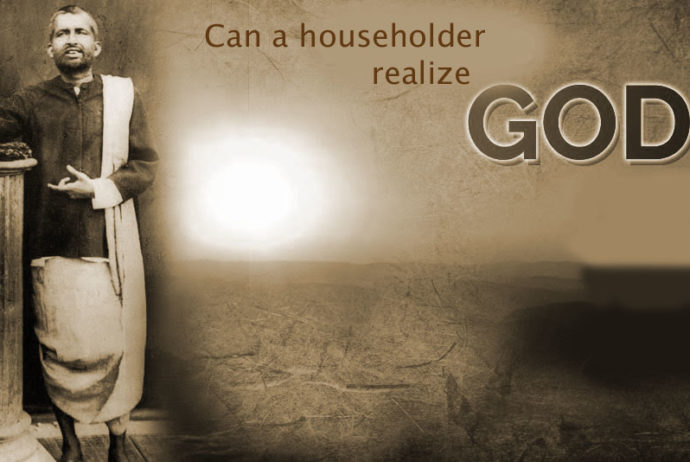
Washing away the heart’s impurities with tears
Visitor: Sir, is it ever possible to realize God while leading the life of a householder?
Master: Certainly. But as I said just now, one must live in holy company and pray unceasingly. One should weep for God. When the impurities of the mind are thus washed away, one realizes God. The mind is like a needle covered with mud, and God is like a magnet. The needle cannot be united with the magnet unless it is free from mud. Tears wash away the mud, which is nothing but lust, anger, greed, and other evil tendencies, and the inclination to worldly enjoyments as well. As soon as the mud is washed away, the magnet attracts the needle, that is to say, man realizes God. Only the pure in heart see God. A fever patient has an excess of the watery element in his system. What can quinine do for him unless that is removed?
Why shouldn’t one realize God while living in the world? But, as I said, one must live in holy company, pray to God, weeping for His grace, and now and then go into solitude. Unless the plants on a foot-path are protected at first by fences, they are destroyed by cattle.
Need of a guru
Visitor: “Then householders, too, will have the vision of God, won’t they?”
Master: “Everybody will surely be liberated. But one should follow the instructions of the guru; if one follows a devious path, one will suffer in trying to retrace one’s steps. It takes a long time to achieve liberation. A man may fail to obtain it in this life. Perhaps he will realize God only after many births. Sages like Janaka performed worldly duties. They performed them, bearing God in their minds, as a dancing-girl dances, keeping jars or trays on her head. Haven’t you seen how the women in northwest India walk, talking and laughing while carrying water-pitchers on their beads?”
Visitor: You just referred to the instructions of the guru. How shall we find him?
Master: Anyone and everyone cannot be a guru. A huge timber floats on the water and can carry animals as well. But a piece of worthless wood sinks, if a man sits on it, and drowns him. Therefore in every age God incarnates Himself as the guru, to teach humanity. Satchidananda alone is the Real guru.
What is knowledge? And what is the nature of this ego? ‘God alone is the Doer, and none else’ – that is knowledge. I am not the doer; I am a mere instrument in His hand. Therefore I say: ‘O Mother, You are the Operator and I am the machine. You are the Indweller and I am the house. You are the Driver and I am the carriage. I move as You move me. I do as You make me do. I speak as You make me speak. Not I, not I, but You, but You.’
Yes. It is possible to realize God while leading the life of a householder. Everybody will surely be liberated. But one should follow the instructions of the guru.
Gospel of Ramakrishna
Chapter 2
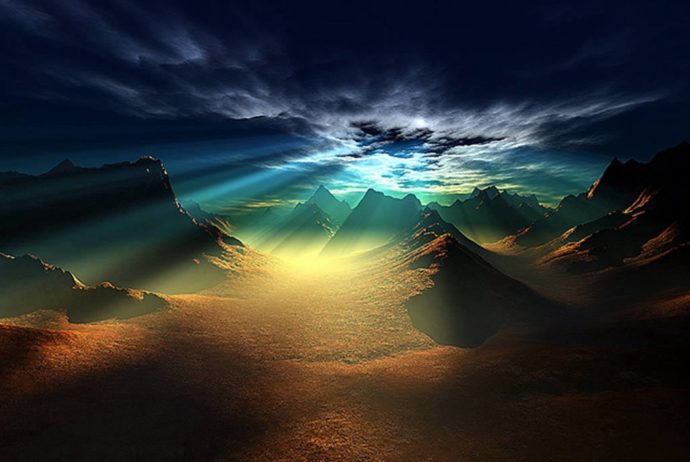
Questioner: Repeatedly you have been saying that events are causeless, a thing just happens and no cause can be assigned to it. Surely everything has a cause, or several causes. How am I to understand the causelessness of things?
Maharaj: From the highest point of view the world has no cause.
Q: But what is your own experience?
M: Everything is uncaused. The world has no cause.
Q: I am not enquiring about the causes that led to the creation of the world. Who has seen the creation of the world? It may even be without a beginning, always existing. But I am not talking of the world. I take the world to exist — somehow. It contains so many things. Surely, each must have a cause, or several causes.
M: Once you create for yourself a world in time and space, governed by causality, you are bound to search for and find causes for everything. You put the question and impose an answer.
Q: My question is very simple: I see all kinds of things and I understand that each must have a cause, or a number of causes. You say they are uncaused — from your point of view. But, to you nothing has being and, therefore, the question of causation does not arise. Yet you seem to admit the existence of things, but deny them causation. This is what I cannot grasp. Once you accept the existence of things, why reject their causes?
M: I see only consciousness, and know everything to be but consciousness, as you know the picture on the cinema screen to be but light.
Q: Still, the movements of light have a cause.
M: The light does not move at all. You know very well that the movement is illusory, a sequence of interceptions and colour-ings in the film. What moves is the film — which is the mind.
Q: This does not make the picture causeless. The film is there, and the actors with the technicians, the director, the producer, the various manufacturers. The world is governed by causality. Everything is interlinked.
M: Of course, everything is interlinked. And therefore everything has numberless causes. The entire universe contributes to the least thing. A thing is as it is, because the world is as it is. You see, you deal in gold ornaments and I — in gold. Between the different ornaments there is no causal relation.
When you re-melt an ornament to make another, there is no causal relation between the two. The common factor is the gold. But you cannot say gold is the cause. It cannot be called a cause, for it causes nothing by itself. It is reflected in the mind as ‘I am’, as the ornament’s particular name and shape. Yet all is only gold. In the same way reality makes everything possible and yet nothing that makes a thing what it is, its name and form, comes from reality.
But why worry so much about causation? What do causes matter, when things themselves are transient? Let come what comes and let go what goes — why catch hold of things and enquire about their causes?
Q: From the relative point of view, everything must have a cause.
M: Of what use is the relative view to you? You are able to look from the absolute point of view — why go back to the relative? Are you afraid of the absolute?
Q: I am afraid. I am afraid of falling asleep over my so-called absolute certainties. For living a life decently, absolutes don’t help. When you need a shirt, you buy cloth, call a tailor and so on.
M: All this talk shows ignorance.
Q: And what is the knower’s view?
M: There is only light and the light is all. Everything else is but a picture made of light. The picture is in the light and the light is in the picture. Life and death, self and not-self — abandon all these ideas. They are of no use to you.
Q: From what point of view you deny causation? From the relative — the universe is the cause of everything. From the absolute — there is no thing at all.
M: From which state are you asking?
Q: From the daily waking state, in which alone all these discussions take place.
M: In the waking state all these problems arise, for such is its nature. But, you are not always in that state. What good can you do in a state into which you fall and from which you emerge, helplessly. In what way does it help you to know that things are causally related — as they may appear to be in your waking state?
Q: The world and the waking state emerge and subside together.
M: When the mind is still, absolutely silent, the waking state is no more.
Q: Words like God, universe, the total, absolute, supreme are just noises in the air, because no action can be taken on them.
M: You are bringing up questions which you alone can answer.
Q: Don’t brush me off like this! You are so quick to speak for the totality, the universe and such imaginary things! They cannot come and forbid you to talk on their behalf. I hate those irresponsible generalizations! And you are so prone to personalise them. Without causality there will be no order; nor purposeful action will be possible.
M: Do you want to know all the causes of each event? Is it possible?
Q: I know it is not possible! All I want to know is if there are causes for everything and the causes can be influenced, thereby affecting the events?
M: To influence events, you need not know the causes. What a roundabout way of doing things! Are you not the source and the end of every event? Control it at the source itself.
Q: Every morning I pick up the newspaper and read with dismay that the world’s sorrows — poverty, hatred and wars — continue unabated. My questions are concerning the fact of sorrow, the cause, the remedy. Don’t brush me off saying that it is Buddhism! Don’t label me. Your insistence on causelessness removes all hope of the world ever changing.
M: You are confused, because you believe that you are in the world, not the world in you. Who came first — you or your parents? You imagine that you were born at a certain time and place, that you have a father and a mother, a body and a name. This is your sin and your calamity! Surely you can change your world if you work at it. By all means, work. Who stops you? I have never discouraged you. Causes or no causes, you have made this world and you can change it.
Q: A causeless world is entirely beyond my control.
M: On the contrary, a world of which you are the only source and ground is fully within your power to change. What is created can be always dissolved and re-created. All will happen as you want it, provided you really want it.
Q: All I want to know is how to deal with the world’s sorrows.
M: You have created them out of your own desires and fears, you deal with them. All is due to your having forgotten your own being. Having given reality to the picture on the screen, you love its people and suffer for them and seek to save them. It is just not so. You must begin with yourself. There is no other way. Work, of course. There is no harm in working.
Q: Your universe seems to contain every possible experience. The individual traces a line through it and experiences pleasant and unpleasant states. This gives rise to questioning and seeking, which broaden the outlook and enable the individual to go beyond his narrow and self-created world limited and self-centred. This personal world can be changed — in time. The universe is timeless and perfect.
M: To take appearance for reality is a grievous sin and the cause of all calamities. You are the all- pervading, eternal and infinitely creative awareness — consciousness. All else is local and temporary. Don’t forget what you are. In the meantime work to your heart’s content. Work and knowledge should go hand in hand.
Q: My own feeling is that my spiritual development is not in my hands. Making one’s own plans and carrying them out leads no where. I just run in circles round myself. When God considers the fruit to be ripe, He will pluck it and eat it. Whichever fruit seems green to Him will remain on the world’s tree for another day.
M: You think God knows you? Even the world He does not know.
Q: Yours is a different God. Mine is different. Mine is merciful. He suffers along with us.
M: You pray to save one, while thousands die. And if all stop dying, there will be no space on earth.
Q: I am not afraid of death. My concern is with sorrow and suffering. My God is a simple God and rather helpless. He has no power to compel us to be wise. He can only stand and wait.
M: If you and your God are both helpless, does it not imply that the world is accidental? And if it is, the only thing you can do is to go beyond it.
Nisargadatta Maharaj – I am That
Appearances and the Reality
Item 14
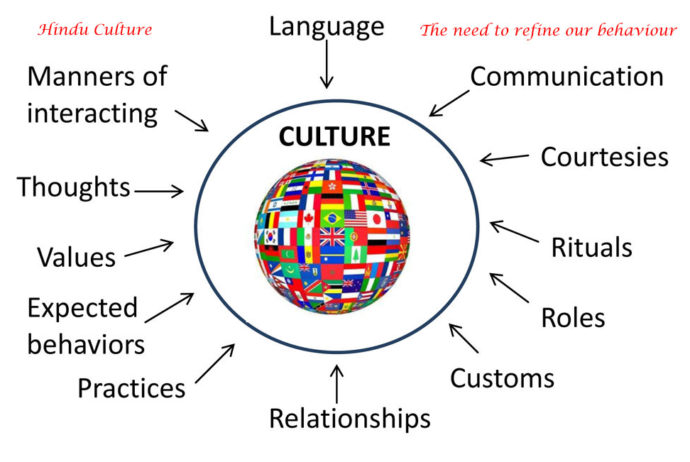
Hindu Culture
The Definition of Culture
Talks by Swami Tejomayananda
What we need to do is to control discipline and refine our behavior in that human being. In the human being, Nature has released its control and said, ” Now you are blessed with an intellect. You have the faculty of reason and discrimination; therefore, you can choose and know what is good for you and live accordingly”. If a person can live like this, it is good; if not he becomes even worse than an animal.
In order to refine the person, to prevent Prakriti from turning into Vikriti, what we need is Samskriti or culture. Mere education or rising to higher positions, gaining money gaining more money and power, would not necessarily make one a cultured person. One’s mind may yet remain animalistic.
Sri Ramakrishna Paramahamsa used to say that our minds are you like that of a vulture. A vulture flies very high in the sky, but where our is his eyes? They are on the dead body lying on the ground. The moment he sees the dead body he sweeps down to eat it! We are also like that. A person may fly to a very “high” position of political, economic, or financial power; and others may even be prostrating to him. But where is his mind? This is, as we say, “corruption in high places”. So when our minds is like that of a vulture fixed on low, base things, we need culture in order to fly high, not only materially, but morally and spiritually as well. Then the mind rises to true spiritual heights.
It is difficult to explain what culture is, and it cannot be taught through discourses. As Swamiji (Swami Chinmayananda) says , culture cannot be taught, but it can be caught ( by the children)”. Just as children automatically “pick up” whichever language is spoken at home without being taught, culture is also “picked up” the same way. If we constantly instruct the children on do’s and dont’s, yet we ourselves live differently, they will not follow our instructions. Example always speaks louder then words, this is why culture cannot be taught merely by words.
Living life based on noble values is the most important point concerning culture. Why do we need values? Why do we need to respect them and live by them? Because in the human being, that is every danger of his nature transgressing its limits and becoming a perversion. This is what we see in the world today; greed for money, power, and position. No one knows what will happen next. Yet we cannot just blame the political leaders, because these tendencies are in our minds as well and we act accordingly. It is just that one who has more power will terrorize more, that is all.
We find this same behavior in some school children also, for some of them are monster-like in creating troubles for others. Concerning the worst-behaved child in the classroom, a teacher once said, “What is great about him is his attendance record at school is hundred percent”. The teacher is thinking to herself, “Stay home at least one day, please !” But no, he attends every day, and every day he creates problems!
There are bullies in the classroom as well as in world politics, and it shows the absence of something – the absence of refinement. One may be rich, a well-educated scholar, or a politically powerful person; but he may not have the refinement of character which we call Samskriti. The beauty of the person does not lie in his physical, educational, or other capabilities; but in but in his culture which expresses itself every moment in his day-to-day life.
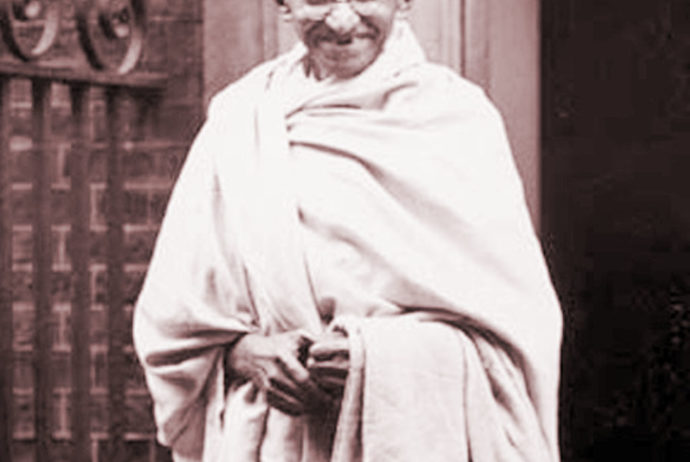
(1) SELFLESS SERVICE A SOURCE OF JOY
The human body is meant solely for service, never for indulgence. The secret of happy life lies in renunciation. Renunciation is life. Indulgence is death. Therefore everyone has a right and should desire to live 125 years while performing service without an eye on result. Such life must be wholly and solely dedicated to service. Renunciation made for the sake of service is an ineffable joy, of which none can deprive one, because that nectar springs from within and sustains life. In this there can be no room for worry or impatience. Without this joy, long life is impossible and would not be worth-while even if possible.
The soul is omnipresent; why should she care to be confined within the cage-like body, or do evil and even kill for the sake of the cage ? We thus arrive at the ideal of total renunciation and learn to use the body for the purpose of service, so long as it exists, so much so, that service and not bread becomes with us, the staff of life. We eat and drink, sleep and awake, for service alone. Such an attitude of mind brings us real happiness and beatific vision in the fullness of time.
(2) SERVICE MEANT FOR SELF-REALIZATION
I am here to serve no one else but myself, to find my own self-realization through the service of these village folk. Man’s ultimate aim is the realization of God, and all his activities — social, political, religious — have to be guided by the ultimate aim of the vision of God. The immediate service of human beings becomes a necessary part of the endeavour, simply because the only way to find God is to see Him in His creation and be one with it. This can only be done through one’s country. I am part and parcel of the whole, and I cannot find Him apart from the rest of humanity. My countrymen are my nearest neighbours. They have become so helpless, so resourceless, so inert that I must concentrate on serving them. If I could persuade myself that I should find Him in a Hima- layan cave, I would proceed there immediately. But I know that I cannot find Him apart from humanity.
(3) SERVICE LEADS TO SALVATION
I am striving for the Kingdom of Heaven, which is spiritual deliverance. For me the road to salvation lies through incessant toil in the service of my country and my humanity. I want to identify myself with everything that lives. In the language of the Gita> I want to live at peace with both friend and foe. My patriotism is for me a stage on my journey to the land of Eternal Freedom and Peace. Thus it will be seen that for me there is no politics devoid of religion. They subserve religion. Politics bereft of religion is a death-trap because they kill the Soul.
(4) SERVICE SHOULD BE CONSTANT
A life of service must be one of humility. He, who could sacrifice his life for others, has hardly time to reserve for himself a place in the sun. Inertia must not be mistaken for humility, as it has been in Hinduism. True humility means most strenuous and constant endeavour, entirely directed towards the service of humanity. God is continuously in action without resting for a single moment. If we should serve Him or become one with Him, our activity must be as unwearied as His. There may be momentary rest in store for the drop which is separated from the ocean, but not for the drop in the ocean, which knows no rest. The same is the case with ourselves. As soon as we become one with the ocean in the shape of God, there is no more rest for us, nor indeed do we need rest any, longer. Our very sleep is action. For we sleep with the thought of God in our hearts. This restlessness constitutes true rest. This never-ceasing agitation holds the key to peace ineffable. This supreme state of total surrender is difficult to describe, but not beyond the bounds of human experience. It has been attained by many dedicated souls, and may be attained by ourselves as well.
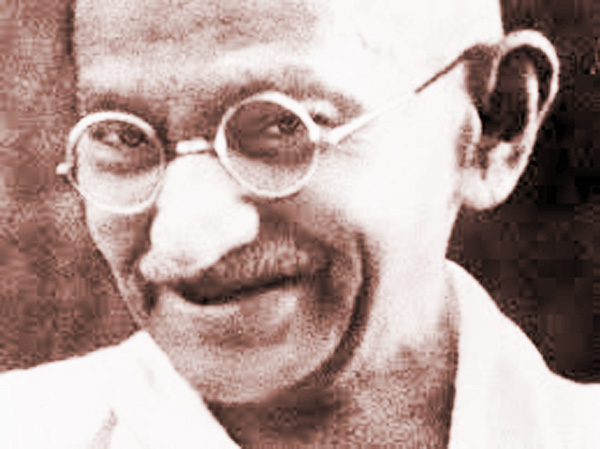
(1) RESTRAINT SHOULD BE VOLUNTARY
Restraint self-imposed is not compulsion. A man who chooses the path of freedom from restraint, i.e. self-indulgence, will be a bondslave of passions, whilst a man who binds himself to rules and restraints, releases himself. All things in the universe including the sun and the moon and the stars — obey certain laws.
Without the restraining influence of these laws, the world would not go on for a single moment. … It is discipline and restraint that separates us from the brute. If we would be men walking with our heads erect and not walking on all fours, let us understand and put ourselves under voluntary discipline and restraint.
(2) CONTROL OF PALATE
True happiness is impossible without true health and true health is impossible without a rigid control of the palate. All the other senses will automatically come under our control when the palate has been brought under control. And he who has conquered his senses has really conquered the whole world.
One should eat not in order to please the palate but just to keep the body going. When each organ of sense subserves the body and through the body the soul, its specific relish disappears and then alone does it begin to function in the way nature intended it to do. Any number of experiments is too small and no sacrifice too great for attaining this symphony with nature.
(3) CONQUEST OF LUST
The conquest of lust is the highest endeavour of man or woman’s existence. Without overcoming lust man cannot hope to rule over self. And without rule over self there can be no Swaraj or Ramaraj. Rule of all without rule of oneself would prove to be as deceptive and disappointing as a painted toy-mango, charming to look at outwardly, but hollow and empty within… Great causes… call for spiritual effort or soul- force. Soul-force comes only through God’s grace, and God’s grace never descends upon a man who is a slave to lust.
Brahmacharya means control of all organs of sense. He who attempts to control only one organ and allows all others free play, is bound to find his effort futile. To hear suggestive stories with ears, to see suggestive sights with the eyes, to taste stimulating food with the tongue, to touch exciting things with the hands and then at the same time, try to control the only remaining organ, is like putting one’s hand in fire and then trying to escape being burnt. … If we practise simultaneous self-control in all directions, the attempt is scientific and easy of success. Perhaps the palate is the chief sinner. Hence we have assigned to its control, a separate place among the observances.
(4) SUBLIMATION OF VITALITY
All power comes from the observation and sublimation of the vitality that is responsible for the creation of life. If the vitality is husbanded instead of being dissipated, it is transmuted into creative energy of the highest order. . . . This vitality is . . . dissipated by evil . . . thoughts. And since thought is the root of all speech and action, the quality of the latter corresponds to that of the former.
Hence perfectly controlled thought is itself a power, of the highest potency and can become self-acting. . . . Such power is impossible in one who dissipates his energy . . . even as steam kept in a leaking pot yields no power.
(5) RESTRAINT VS. SUPPRESSION
It is harmful to suppress the body if the mind at the same time is allowed to go astray. Where the mind wanders, the body must follow sooner or later. It is necessary here to appreciate one distinction. It is one thing to allow the mind to harbour impure thoughts, it is different thing altogether if it strays among them in spite of ourselves. Victory will be ours in the end, if we non-co-operate with the mind in this evil process. . . . Hence the body must be immediately taken in hand and then we must put forth a constant endeavour to bring the mind under control. We can do nothing more, nothing less.
Restraint never ruins one’s health. What ruins one’s health is not restraint but outward suppression. A really self-restrained person grows every day from strength to strength and from peace to more peace. The very first step in self- restraint is the restraint of thoughts. Understand your limitations and do only as much as you can. . . . Let not what I have told you alarm you or weaken you. Always aim at complete harmony of thought and word and deed.
Always aim at purifying your thoughts and everything will be well. There is nothing potent than thought, deed follows word and word follows thought. The world is the result of a mighty thought, and where the thought is mighty and pure, the result is always mighty and pure.